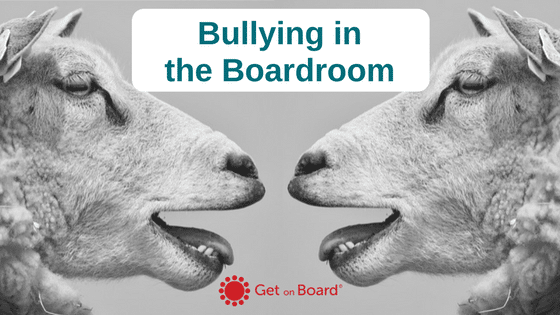Bullying in the Boardroom

At what point does a robust conversation become bullying behaviour? I can imagine that it largely depends on two things:
- A person’s interpretation of the intentions behind another’s behaviours.
- That someone actively uses intimidation, mistreatment, harassment, discrimination, domination, exclusion, and other negative behaviours towards another board member and/or to get their way in the boardroom.
The first of these is fairly simple to deal with. A conversation between the affected board member and the person who was acting in a perceived inappropriate manner should quickly clear the air.
The second is a circumstance where, traditionally in the boardroom, it is seen as something that “comes with the territory”.
Or is it?
A recent Fair Work Commission decision found that Company Directors are classified as “Workers” for the purpose of anti-bullying laws under the Fair Work Act 2009 (Cth.). Meaning that directors can now apply for stop bullying orders, including around the boardroom table¹.
This really piqued my interest because, if you’ve been reading this blog for a while you’ll know, I’ve had an interesting board career (even in its short life time).
In general, I think the Fair Work Commission’s decision is OK. We’re never sure of the unintended consequences of decisions like this; particularly with the classification of a Company Director as a ‘worker’ under the Work Health and Safety Act 2011 (Cth.). If I were in a similar situation to this case, I would have resigned rather than enter in to a protracted process. I wonder how many boards lose great people because of this though…
However, anything that makes us all stop and check our behaviour – in particular how others perceive it – has to be more positive than negative.
Where to from here?
I see three main impacts on you and I as directors from this case study:
1. Don’t be too sensitive, but don’t take any sh*t
Check-in with yourself that you’re not in the mindset where you think everything someone says or does is an intentional affront towards you. It’s likely not, and perhaps it’s time that you start to push your ideas, viewpoints, and suggestions forward a little more strongly.
Those being said, if the behaviours from a particular board member continue and are quite specifically centred on you or another board member, talk to the Chair and/or call the action out and bring it up around the board table. If this doesn’t change anything, consider resigning.
2. Watch your behaviours
Be self-aware and conscious of how you behave in the boardroom: what you say and what you do – and how your behaviours impact your fellow board members.
Don’t be “that person” who can’t appropriately handle difficult circumstances or disagreements.
Learn to appropriately and respectfully challenge ideas, handle your emotions, and how to not identify yourself as the ideas, suggestions, and opinions you put forward.
3. Build your resilience
You can spend a lot of your time as a board member frustrated. That’s why it’s important to build your ability to cope and bounce-back. To help build your resilience, check out this post here, and this [free] book.
Resilience is so important to being a high performing director we even included it in our Boardroom Bootcamp course.
At the end of the day, you should treat everyone with respect, and not just in the boardroom. If you’re feeling bullied, talk to the Chair. Or, like in my circumstance, if it’s the Chair who is misbehaving, try to be the change you want to see or get the heck off that board! Your reputation will thank you for it.
¹Trevor Yawirki Adamson [2017] FWC 1976
Subscribe to Receive Articles, Resources, and Tools to Support Your Board Career
